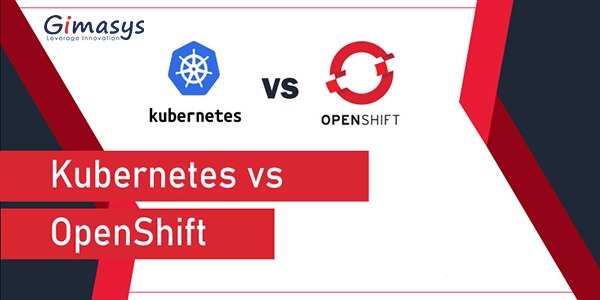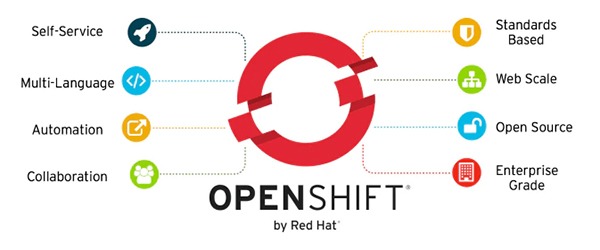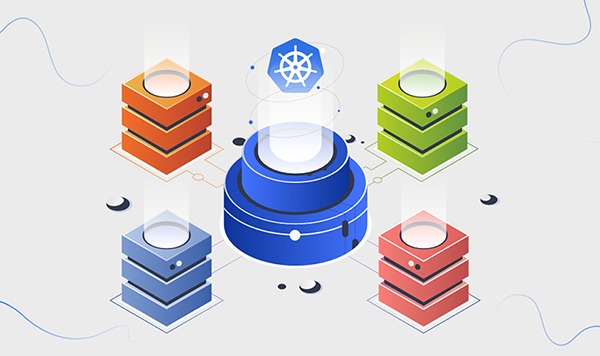Số hóa bùng nổ mạnh mẽ kéo theo khách hàng ngày càng yêu cầu cao…
OpenShift vs Kubernetes – Key Differences
Containers are a type of virtualization for operating systems. From a micro-software process or service to a giant application, a single container can run them all. All the files needed to execute, binaries, configuration files are contained in one container. Container sets, as opposed to server virtualization, do not contain operating system images, so they are lighter and more portable, at a lower cost.
Two of the most famous container development platforms are OpenShift and Kubernetes. When discussing OpenShift and Kubernetes, you may hear the term “containerization.” But have you ever considered what it means and how it is used? According to a popular definition, containerization is “the packaging of separate applications to create, manage, and deploy them more efficiently across multiple infrastructures.” “Containerization” allows businesses to be more flexible and scalable. Therefore, application development is more efficient. Companies are increasingly realizing the benefits of these tools.

Comparing Kubernetes to OpenShift can be confusing because Kubernetes is a core component of OpenShift. OpenShift vendor Red Hat calls OpenShift “Enterprise Edition of Kubernetes.” There are not many “containerization” methods to choose from, but choosing the right one from among the best is an extremely difficult task. While Kubernetes automates application deployment, scaling, and operations, OpenShift helps applications run more efficiently by integrating with Kubernetes. This paragraph compare and contrast the most important features of OpenShift with Kubernetes.

What is Openshift?
OpenShift is a Cloud as a Service (PaaS) development platform developed by Red Hat. It is really useful for creating Cloud-based applications and is an open source and very user-friendly cloud platform to develop, test and run applications before deploying them to the cloud. . OpenShift allows developers to use an integrated development environment (IDE) to create and deploy Docker-formatted containers, which will then be managed by the Kubernetes platform. OpenShift can handle applications based on Node.js, Ruby, Python, Perl, and Java. The scalability of OpenShift is one of its most important aspects, as it allows users to use it to support applications built in many different languages. Containerized applications can be optimized automatically or manually using the platform.

What is Kubernetes?
Over a decade ago, Google developers created Kubernetes, a container-as-a-service (CaaS) technology. Kubernetes is an open source mobile container solution that allows developers to automate deployment, management, scaling, and networking between containers. It supports large-scale management of containerized, distributed applications. You simply tell Kubernetes where you want your software to run, and the platform handles all the deployment and management for you. Kubernetes, now part of the Cloud Native Computing Foundation, allows application developers to take advantage of features such as self-monitoring, process automation, container balancing, storage orchestration, etc. and simple discovery, Kubernetes organizes containers into logical clusters. Kubernetes is capable of running in both cloud and on-premise systems, as well as hybrid clouds.
> Refer to the Google Kubernetes Engine (GKE) system
Compare the differences between OpenShift and Kubernetes
Now that we have some basic knowledge of OpenShift and Kubernetes, let's take a look at some of the differences between these platforms with Gimasys in the table below.
| OpenShift | Kubernetes |
| OpenShift is not open source. It is a commercial product. | Kubernetes is an open source product. |
| OpenShift has stronger security policies than Kubernetes. OpenShift comes with a built-in service that makes the authentication and authorization process simple. | Kubernetes privacy policies are somewhat straightforward. Kubernetes lacks built-in capabilities for authentication and authorization. |
| There is a login page for OpenShift's web console. The dashboard is easily accessible and most resources can be created or changed via a form. All servers, projects, and cluster roles can be displayed. | The Kubernetes console must be installed separately, and you must use Kube-proxy to forward a port from your local workstation to the cluster's administrative server. |
| Scaling is very simple using OpenShift. | Adding virtual machines in Kubernetes takes a long time. It requires developers to create YAML scripts. |
| For cluster management, Red Hat OpenShift provides a user-friendly control panel. | Kubernetes also provides a default dashboard for cluster administration. However, due to limited functionality and minimal user interface, as cluster size increases you will need to add more powerful tools like Istio, Prometheus, and Grafana. |
| The DeploymentConfig command is used to deploy OpenShift. DeploymentConfig, unlike Kubernetes objects, does not support multiple updates. | Deployment objects are used in Kubernetes deployments. Kubernetes deployment objects support multiple concurrent changes. |
| OpenShift includes a built-in image registry that can be used with Red Hat or Docker Hub. | You can set up your own Docker registry with Kubernetes, however, there is no built-in image registry. |
| To upgrade OpenShift to the latest version, you must use the Red Hat Enterprise Linux package management system. | On both platforms, instead of rebuilding Kubernetes clusters from scratch, you can upgrade existing ones. |
| Red Hat Enterprise Linux Atomic Host (RHELAH), Red Hat's proprietary Fedora or CentOS are required for OpenShift. | As an open source framework, Kubernetes offers more freedom, as it can be installed on practically any platform, including Microsoft Azure and AWS, as well as any Linux distribution, including Ubuntu and Debian . |
| OpenShift's community support is limited primarily to Red Hat developers. | Kubernetes has a vibrant developer community that is constantly working to improve the platform. |
| OpenShift has an average of 3 updates per year. OpenShift DeploymentConfig does not support multiple simultaneous updates | Kubernetes has an average of 4 updates per year. It supports multiple simultaneous updates at the same time. |
| OpenShift has an out-of-the-box networking solution called Open vSwitch, which includes three native plug-ins. | Kubernetes does not include a networking solution, although it does allow users to use third-party networking plug-ins. |
| Templates in OpenShift are nearly impossible to adapt or be user-friendly. | Kubernetes provides Helm templates that are easy to use and allow great flexibility |
| OpenShift comes with its own image repository and works well with DockerHub and Red Hat. As a result, developers can use the image stream to find and manage container images easily. | While Kubernetes lacks a built-in Image Registry, it allows you to pull images from your own registry to create your own. |
| OpenShift allows developers to use Image Streams to manage container images. | Kubernetes lacks container image management |
| While OpenShift does not provide a full CI/CD (continuous integration and continuous delivery) solution, it does include a Jenkins container that serves as a Continuous Integration server. | Kubernetes does not have a complete CI/CD solution (continuous integration and continuous delivery), but by combining Kubernetes with technologies such as monitoring, automated testing, and CI servers, you can build a comprehensive CI/CD process. |
| It provides native networking solutions for users. | Some Kubernetes components do not have a networking solution and provide third-party plugins. |
| Router objects provide external access to OpenShift. | Intruders allow external access to Kubernetes services. |
In conclusion
So, which product should you use? OpenShift and Kubernetes are popular container management systems, and each has its own capabilities, advantages, and disadvantages. While K8 helps automate application deployment, scaling, and operations, OpenShift is a container platform that works with Kubernetes to improve application performance. If you are familiar with containerization ideas and have some knowledge of K8s, then you may prefer Kubernetes over OpenShift because it is more flexible. OpenShift makes things easier for newbies by providing a better CLI and of course a web interface. Beginners should use the web interface instead of the command line interface. On the other hand, the console with K8 is not ideal because it doesn't add any value to K8 other than the command line. It is completely up to you what you choose, but I hope that this article has helped you somewhat in choosing the best considering your needs and requirements.
Through this article, we can see that Cloud has been and is an inevitable trend in the technology development and optimization system of enterprises. Gimasys - Google's Premier Partner in Vietnam is a provider and consultant on the structure and design of the optimal Cloud solution for you. For technical support, you can contact Gimasys – Premier Partner of Google in Vietnam at the following information:
- Hotline: 0974 417 099 (HCM) | 0987 682 505 (HN)
- Email: gcp@gimasys.com
Source: Gimasys



